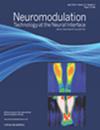Comparison of Two Different Neuromodulation Treatments in Patients With Acute Zoster-Related Trigeminal Neuropathic Pain and Pain Catastrophizing
IF 3.2
3区 医学
Q2 CLINICAL NEUROLOGY
引用次数: 0
Abstract
Objective
This study aimed to compare the efficacy of two neuromodulation techniques, peripheral nerve stimulation (PNS) and pulsed radiofrequency (PRF), in patients with acute zoster-related trigeminal neuropathic pain with pain catastrophizing.
Materials and Methods
A total of 65 patients with acute zoster-related trigeminal neuropathic pain and pain catastrophizing were recruited from the Department of Pain Management of the Affiliated Hospital of Southwest Medical University between March 2019 and March 2024. According to the order of enrollment, participants were randomly assigned to two groups: the PNS group (n = 31), which received stimulation of the supraorbital nerve, and the PRF group (n = 34), which underwent PRF treatment of the same nerve. Pain levels were assessed using a visual analog scale (VAS), and the dosage of the anticonvulsant pregabalin was recorded at baseline, one week, two weeks, one month, three months, and six months postoperatively. Additionally, patients were evaluated using the Pain Catastrophizing Scale (PCS) and the Short Form 36 (SF-36) Health Survey at baseline and one, three, and six months postoperatively. Both groups were also monitored for adverse events and patient satisfaction throughout the study period.
Results
Both the PNS and PRF groups experienced significant pain relief. However, the PNS group demonstrated superior outcomes compared with the PRF group at both short-term follow-up time points (p < 0.05). No significant difference in VAS scores was observed between the PNS and PRF groups during the long-term (six-month) follow-up. Improvements were noted in the SF-36 (across all eight dimensions) and PCS scores in both groups following treatment (p < 0.05). Notably, the PCS scores in the PNS group were consistently lower than those in the PRF group at all follow-up time points (p < 0.05). Additionally, patients in the PNS group exhibited greater improvements in physical role limitations, somatic pain, general health, social functioning, emotional role limitations, and mental health compared with those in the PRF group (p < 0.05). There were no significant differences between the two groups regarding improvements in physical functioning and vigor. After treatment, the average daily dose of pregabalin (mg/d) was reduced in both groups, with patients in the PNS group requiring a lower dose than those in the PRF group. Furthermore, patients in the PNS group reported a significantly higher level of satisfaction (p < 0.05) based on satisfaction evaluations. No instances of bleeding, infection, or other adverse effects were observed in either group after treatment.
Conclusion
Both PNS and PRF are effective and feasible for managing pain in patients with acute zoster-related trigeminal neuropathic pain and pain catastrophizing. However, PNS demonstrates superior efficacy in terms of early pain relief, reduction of pain catastrophizing, and improvements in quality of life, accompanied by higher patient satisfaction compared with PRF.
两种不同神经调节治疗急性带状疱疹相关性三叉神经性疼痛和疼痛巨化的比较。
目的:比较外周神经刺激(PNS)和脉冲射频(PRF)两种神经调节技术对急性带状疱疹相关性三叉神经性疼痛的治疗效果。材料与方法:选取2019年3月至2024年3月西南医科大学附属医院疼痛管理科急性带状疱疹相关三叉神经性疼痛及疼痛灾难化患者65例。根据入组顺序,参与者被随机分为两组:PNS组(n = 31)接受眶上神经刺激,PRF组(n = 34)接受同一神经的PRF治疗。使用视觉模拟量表(VAS)评估疼痛水平,并记录抗惊厥药普瑞巴林的剂量,分别在基线、术后1周、2周、1个月、3个月和6个月。此外,在基线和术后1、3、6个月,使用疼痛灾难量表(PCS)和SF-36健康调查问卷对患者进行评估。两组在整个研究期间还监测了不良事件和患者满意度。结果:PNS组和PRF组均有明显的疼痛缓解。然而,与PRF组相比,PNS组在两个短期随访时间点表现出更好的结果(p < 0.05)。在长期(6个月)随访期间,PNS组和PRF组的VAS评分无显著差异。治疗后两组SF-36(所有8个维度)和PCS评分均有改善(p < 0.05)。值得注意的是,在所有随访时间点,PNS组的PCS评分均低于PRF组(p < 0.05)。此外,与PRF组相比,PNS组患者在身体角色限制、躯体疼痛、一般健康、社会功能、情感角色限制和心理健康方面表现出更大的改善(p < 0.05)。在身体机能和活力方面,两组之间没有显著差异。治疗后,两组患者普瑞巴林的平均日剂量(mg/d)均有所减少,PNS组患者所需剂量低于PRF组。此外,基于满意度评估,PNS组患者报告的满意度水平显著高于PNS组(p < 0.05)。治疗后两组均未发生出血、感染或其他不良反应。结论:PNS和PRF治疗急性带状疱疹相关性三叉神经性疼痛和疼痛灾难化是有效可行的。然而,与PRF相比,PNS在早期疼痛缓解、减轻疼痛灾难和改善生活质量方面表现出更优越的疗效,并伴有更高的患者满意度。
本文章由计算机程序翻译,如有差异,请以英文原文为准。
求助全文
约1分钟内获得全文
求助全文
来源期刊

Neuromodulation
医学-临床神经学
CiteScore
6.40
自引率
3.60%
发文量
978
审稿时长
54 days
期刊介绍:
Neuromodulation: Technology at the Neural Interface is the preeminent journal in the area of neuromodulation, providing our readership with the state of the art clinical, translational, and basic science research in the field. For clinicians, engineers, scientists and members of the biotechnology industry alike, Neuromodulation provides timely and rigorously peer-reviewed articles on the technology, science, and clinical application of devices that interface with the nervous system to treat disease and improve function.
 求助内容:
求助内容: 应助结果提醒方式:
应助结果提醒方式:


